in Clarksville,
Tennessee
May 18, 2012
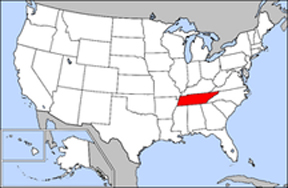


| in Clarksville,
Tennessee |
   |
 Clarksville
is a city in and the county seat of Montgomery County, Tennessee, and
is the fifth largest city in the state. Clarksville is the ninth fastest
growing city in the nation and the principal central city of the Clarksville,
TN-KY metropolitan statistical area. Clarksville is located on the northwest
edge of the Highland Rim, which surrounds the Nashville Basin, and is
45 miles northwest of Nashville. Clarksville
is a city in and the county seat of Montgomery County, Tennessee, and
is the fifth largest city in the state. Clarksville is the ninth fastest
growing city in the nation and the principal central city of the Clarksville,
TN-KY metropolitan statistical area. Clarksville is located on the northwest
edge of the Highland Rim, which surrounds the Nashville Basin, and is
45 miles northwest of Nashville.The city was incorporated in 1785, making it Tennessee's first incorporated city, and named for General George Rogers Clark, frontier fighter and Revolutionary War hero, brother of William Clark of the Lewis and Clark Expedition. Clarksville is one of the South's most historic cities and the home of Austin Peay State University; The Leaf-Chronicle, the oldest newspaper in Tennessee; and neighbor to the Fort Campbell, United States Army base. Fort Campbell is the home of the 101st Airborne Division (Air Assault), and is located approximately ten miles from downtown Clarksville, straddling the Tennessee-Kentucky state line. It is officially Fort Campbell, Kentucky due to the fact the base U.S. Post Office is on the Kentucky side of the base; the majority of Fort Campbell is within the state of Tennessee. |
|
| The mural shown below on the right is entitled Bursting With Pride and is 10,000 square feet in size. It was painted by Ricky Deel in the year 2000 and depicts various Clarksville Tennessee landmarks. | |
 |
 |
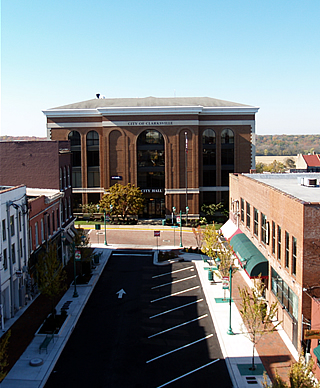 |
 |
This
statue shown below is located outside City Hall in Clarksville, Tennessee.
A close up photo of the plaque is also shown below. Montgomery county is
named in honor of John Montgomery because he claimed Clarksville, Tennessee
which is Tennessee's second oldest city. |
|
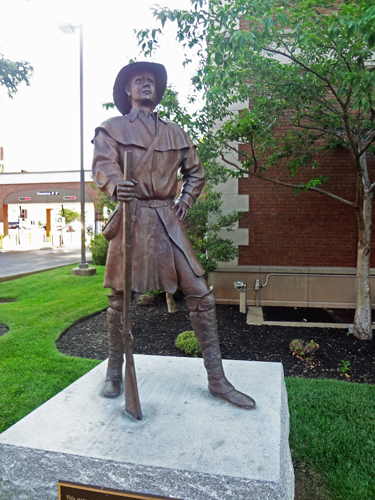 |
 |
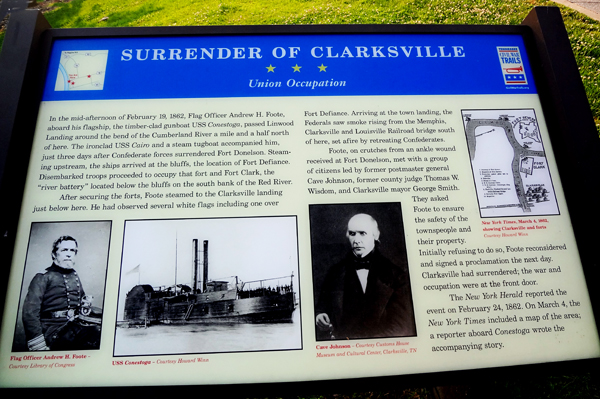 |
|
| Below: Cumberland Riverwalk at McGregor Park: This internationally acclaimed riverwalk features beautiful overlook plazas, a children's playground, picnic facilities, a boat ramp and more. | |

|
 |
 |
 |
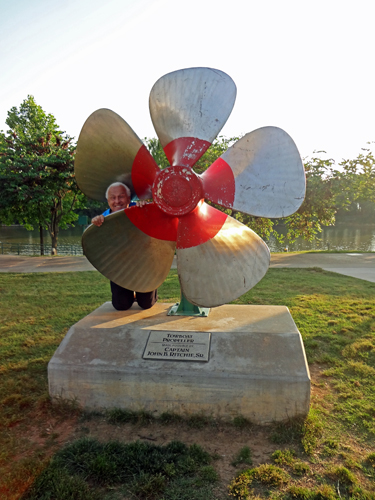 |
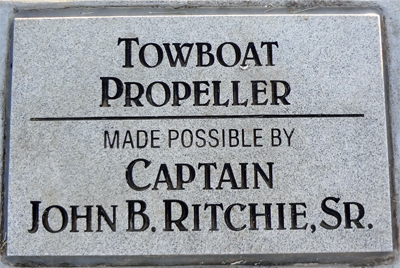 |
 |
 |
 Beware
of the giant pink pig in somebody's front yard. Beware
of the giant pink pig in somebody's front yard. |
|
 |
 |
 Wilma
Glodean Rudolph (June 23, 1940 - November 12, 1994) was an
American athlete. Rudolph was considered the fastest woman in the world
in the 1960s and competed in two Olympic Games, in 1956 and in 1960. Wilma
Glodean Rudolph (June 23, 1940 - November 12, 1994) was an
American athlete. Rudolph was considered the fastest woman in the world
in the 1960s and competed in two Olympic Games, in 1956 and in 1960.
In the 1960 Summer Olympics in Rome Rudolph became the first American woman to win three gold medals in track and field during a single Olympic Games. A track and field champion, she elevated women's track to a major presence in the United States. She is also regarded as a civil rights and women's rights pioneer. Along with other 1960 Olympic athletes such as Cassius Clay, who later became Muhammad Ali, Rudolph became an international star due to the first international television coverage of the Olympics that year. The powerful sprinter emerged from the 1960 Rome Olympics as The Tornado, the fastest woman on earth. The Italians nicknamed her La Gazzella Negra (The Black Gazell); to the French she was La Perle Noire (The Black Pearl). She is one of the most famous Tennessee State University Tigerbelles, the name of the TSU women's track and field program. |
|
Wilma Rudolph |
|
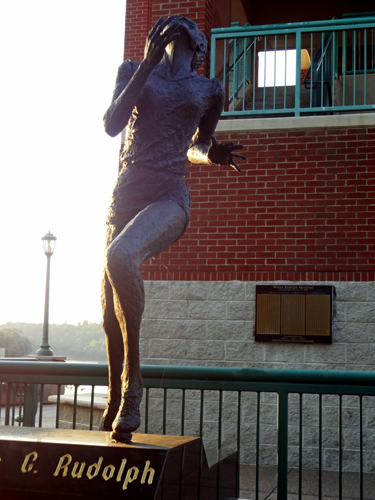 |
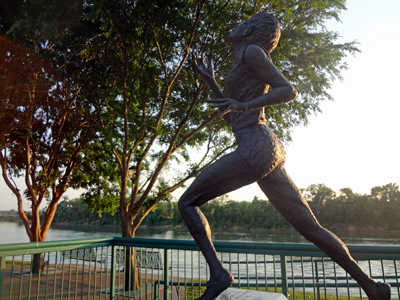 |
 Wilma Rudolph was born prematurely
at 4.5 pounds, the 20th of 22 siblings, and caught infantile paralysis (caused
by the polio virus) as a very young child. She recovered, but wore a brace
on her left leg and foot which had become twisted as a result. By the
time she was twelve years old, she had also survived scarlet fever, whooping
cough, chickenpox, and measles. Her family drove her regularly from Clarksville,
Tennessee, to Nashville, Tennessee for treatments to straighten her twisted
leg. She also had to have a leg brace on for three years (age 6 to 9). Wilma Rudolph was born prematurely
at 4.5 pounds, the 20th of 22 siblings, and caught infantile paralysis (caused
by the polio virus) as a very young child. She recovered, but wore a brace
on her left leg and foot which had become twisted as a result. By the
time she was twelve years old, she had also survived scarlet fever, whooping
cough, chickenpox, and measles. Her family drove her regularly from Clarksville,
Tennessee, to Nashville, Tennessee for treatments to straighten her twisted
leg. She also had to have a leg brace on for three years (age 6 to 9). In 1952, 12-year-old Wilma Rudolph achieved her dream of shedding her handicap and becoming like other children. In high school, she was on the basketball team when she was spotted by Tennessee State track and field coach Edward S. Temple and he knew he had found a natural athlete. Wilma Rudolph had already gained some track experience on Burt High School's track team two years before, mostly as a way to keep busy between basketball seasons. While attending Burt High School, Wilma Rudolph became a basketball star setting state records for scoring and leading her team to the state championship. By the time she was 16, she earned a berth on the U.S. Olympic track and field team and came home from the 1956 Melbourne Games with an Olympic bronze medal in the 4 x 100 m relay. At the 1960 Summer Olympics in Rome she won three Olympic titles: the 100 m, 200 m and the 4 x 100 m relay. As the temperature climbed toward 110 degrees Rudolph ran the 100-meter dash in an impressive 11 seconds flat. However the time was not credited as a world record, because it was wind-aided. She also won the 200-meter dash in 23.2 seconds, a new Olympic record. After these wins, she was hailed throughout the world as the fastest woman in history. Finally, on September 11, 1960, she combined with Tennessee State teammates Martha Hudson, Lucinda Williams and Barbara Jones to win the 400-meter relay in 44.5 seconds, setting a world record. Rudolph retired from track competition in 1962 at age 22 after winning two races at a U.S.-Soviet meet. |
|
After you have seen all of the above,Continue Navigation in any year, any place, in the order
of your choice |
|||||

|
|||||
 |
 |
 |
 |
 |
|
 |
 |
 |
 |
 |
|
 |
 |
 |
 |
 |
 |
 |
 |
 |
 |
 |
 |